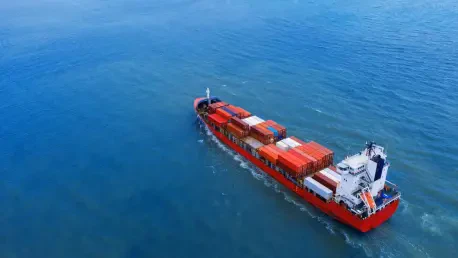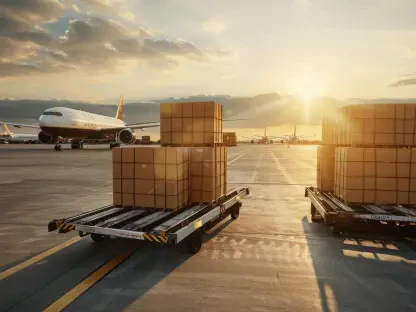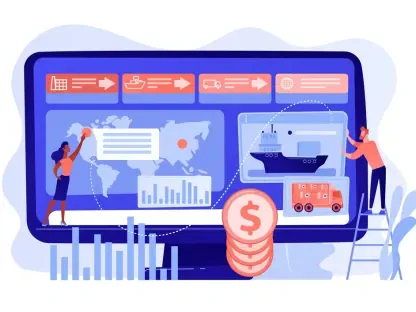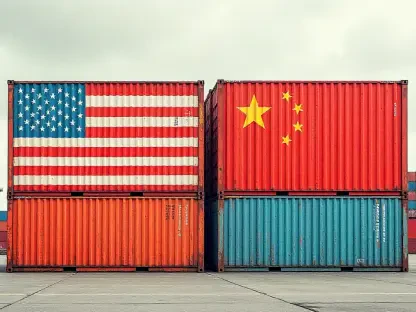In the ever-evolving world of international shipping, few voices carry as much weight as Rohit Laila, a veteran with decades of experience in logistics, supply chain, and delivery. With a deep passion for technology and innovation, Rohit has witnessed firsthand the seismic shifts in the maritime industry, particularly in the tanker market. Today, we dive into the complexities of recent geopolitical developments, market dynamics, and policy changes that are shaping the future for tanker owners. Our conversation explores the implications of a temporary truce between global economic giants, the effects of increased oil production, and the challenges surrounding legislative support for the maritime sector.
How does the recent one-year truce between global leaders impact tanker owners in the US and China, particularly in terms of crude oil exports?
I think this truce is a breath of fresh air for tanker owners on both sides. It’s opened the door for resumed crude oil exports from the US Gulf to China, which is a significant trade route. For US tanker owners, this means more business and better utilization of their fleets, while Chinese owners gain access to a steady supply of crude at potentially more competitive rates. It’s not just about volume; it’s about stabilizing a key market that’s been rattled by trade tensions for years. We’re seeing a renewed sense of confidence, even if it’s cautious, in planning voyages along this corridor.
What are some of the immediate benefits or challenges you’ve observed for tanker owners as a result of this agreement?
The immediate benefit is the uptick in demand for tanker capacity on the US-to-China route. Owners are already seeing more inquiries and bookings, which is a direct boost to their bottom line. However, there’s a flip side—some inefficiencies have crept in due to the suspension of certain port fees. This creates minor operational hiccups, like delays in port clearance or unexpected costs that owners have to absorb. While the positives outweigh these issues for now, it’s something tanker operators are keeping a close eye on.
Turning to production levels, how does the recent OPEC+ decision to increase output by 137,000 barrels per day affect the tanker market?
This output boost, which adds up to nearly 2.91 million barrels per day for the year, is a shot in the arm for the tanker market. More oil production means more cargo to move, plain and simple. It’s particularly good news for sectors like very large crude carriers (VLCCs) that handle long-haul shipments. We’re seeing tighter tonnage availability in some regions, which pushes up freight rates—a win for owners. But it’s not uniform; smaller vessels or those on shorter routes might not feel the same level of impact yet.
Are there specific sectors within the tanker market that are benefiting more from this production increase?
Absolutely, the larger vessels, especially VLCCs and Suezmax tankers, are reaping the biggest rewards right now. These ships are ideally suited for the long-distance transport of crude from major production hubs to refining centers, particularly in Asia. Smaller Aframax or Panamax vessels, while still seeing some uptick, aren’t experiencing the same level of demand surge. It’s really about the economies of scale—bigger ships can capitalize on the increased volumes more effectively at this stage.
Shifting to policy impacts, can you explain how the suspension of port fees introduces inefficiencies for tanker operations?
The suspension of these fees, while seemingly a small issue, creates a ripple effect. Normally, these fees streamline port operations by funding infrastructure and administrative processes. Without them, we’re seeing slower turnaround times at some US ports because the resources aren’t there to keep things running smoothly. For tanker owners, this translates to higher demurrage costs and scheduling headaches. It’s not a deal-breaker, but it’s an annoyance that chips away at margins.
How significant do you believe this suspension of fees is in the broader context of tanker operations, and could it have lasting effects?
In the grand scheme, it’s a relatively minor issue compared to bigger market drivers like trade policies or oil prices. Most tanker owners can adapt by adjusting their schedules or negotiating terms with charterers. But if this suspension drags on or becomes a precedent for other cost-cutting measures at ports, it could erode efficiency over time. I’d say it’s more of a temporary nuisance than a structural problem—unless funding for port operations takes a permanent hit.
Let’s discuss the Ships for America Act. How does the suspension of port fees complicate its funding, and what was the original plan for using that revenue?
The Ships for America Act is a crucial piece of legislation aimed at revitalizing US shipbuilding, and the plan was to use revenue from port fees to partially finance tanker-building initiatives. These fees were seen as a steady income stream to support domestic yards in constructing new vessels, creating jobs, and strengthening the maritime sector. With the suspension, that funding source is gone, at least for now, leaving a gap that policymakers are scrambling to fill. It’s a setback for an industry that’s been hungry for investment.
Are there any alternative funding mechanisms being discussed to support the Act in light of this revenue loss?
There’s talk of tapping into other federal budgets or introducing new levies, though nothing concrete has emerged yet. Some stakeholders are pushing for public-private partnerships to share the financial burden, while others are looking at incentives like tax breaks for shipbuilders to offset the shortfall. It’s still early days, and the uncertainty isn’t helping. Without a clear alternative, the Act risks losing momentum, which would be a shame given its potential to boost the US maritime industry.
How critical is the Ships for America Act for the future of US shipbuilding and the broader maritime sector?
It’s incredibly important. The US shipbuilding industry has lagged behind global competitors for years, and this Act could be a game-changer by generating contracts for domestically built tankers. Beyond just building ships, it’s about creating jobs, enhancing national security through a stronger maritime presence, and reducing reliance on foreign-built vessels. If it stalls due to funding issues, we’re looking at a missed opportunity to rebuild a vital sector of the economy.
Given that this truce between global leaders is only set for 12 months and isn’t a full trade deal, how does its short-term nature influence tanker owners’ strategic planning?
The temporary nature of the truce injects a lot of uncertainty into the market. Tanker owners are hesitant to make long-term commitments—whether it’s fleet expansion or locking in charters—because they know this could unravel in a year or even sooner. Most are taking a wait-and-see approach, focusing on short-term gains while keeping their options open. It’s a pragmatic stance, but it limits bolder investments that could capitalize on the current upswing.
With the backdrop of frequent policy shifts in the US, how are tanker owners managing the added risk and uncertainty in their operations?
They’re building more flexibility into their operations. For instance, many are diversifying their trade routes and client base so they’re not overly reliant on US-China flows. Others are using shorter-term contracts to avoid being locked in if policies flip again. There’s also a growing emphasis on data and analytics to predict market shifts—owners are trying to stay ahead of the curve. It’s not foolproof, but it’s a way to mitigate the risk of sudden changes in the political landscape.
Looking at the broader picture, how would you describe the current market dynamics shaping the tanker industry right now?
It’s a mixed bag. On one hand, you’ve got positive drivers like the truce boosting US-China trade and OPEC+ output increases tightening tonnage supply. Freight rates are trending up in key segments, which is great for owners. On the other hand, there’s lingering uncertainty—geopolitical risks, short-term agreements, and policy hiccups like port fee suspensions are keeping everyone on edge. It’s a market with opportunities, but you’ve got to navigate it with caution and a sharp eye on global events.
What is your forecast for the tanker market over the next year, given these complex dynamics?
I’m cautiously optimistic. If the truce holds and OPEC+ maintains its output levels, we could see sustained demand for tankers, especially in the larger vessel segments. Freight rates might continue to firm up, particularly on long-haul routes. However, the wildcard is geopolitics—if trade tensions flare up again or if domestic policies shift unexpectedly, we could see a pullback. My forecast is for steady growth with some volatility; tanker owners will need to stay agile to weather any storms on the horizon.









